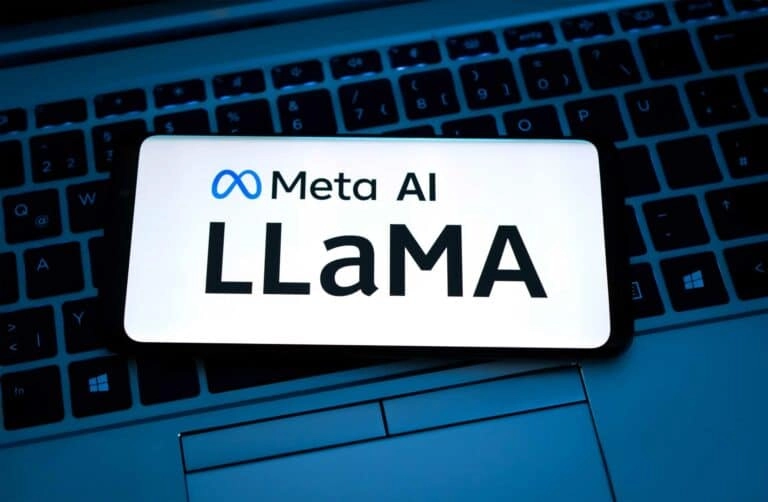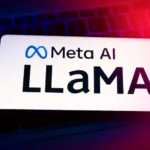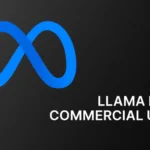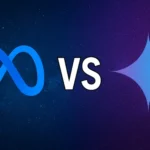You’ve heard the hype around Meta’s Llama models—powerful AI that can write, code, and reason. Now, you want to use that power in your own project. The key to unlocking it is the Meta Llama API. But if you’re new to this, the term “API” itself can sound intimidating.
This guide is here to change that. We will demystify the entire process, step-by-step. We will explain what an API is in simple terms, show you exactly how to get your access key, and walk you through writing your very first line of code to get a response from Llama. By the end of this article, you will not only understand the Llama API, but you will have the confidence and the tools to start using it yourself.

What is an API? A Simple Analogy for Beginners
Before diving into Llama, let’s understand what an API (Application Programming Interface) is.
Imagine you’re at a restaurant. You can’t just walk into the kitchen and make your own food. Instead, you use a menu (the API) to see what’s available. You then give your order to a waiter (the API call), who takes it to the kitchen (the server/model). The waiter then brings your food back to you (the response).
An API is a structured menu that allows different software applications to talk to each other. It defines the “orders” you can place and the format you can expect the “food” (data) to be returned in.
Getting Access: Your First Step into the Llama Ecosystem
To start “ordering” from Meta’s AI kitchen, you need permission. This comes in the form of an API key—a unique, secret password that identifies you.
How to Get Your Llama API Key
- Create an Account: Go to the official Llama developer portal: llama.developer.meta.com. Sign up for an account.
- Join the Waitlist: As of mid-2025, access to Meta’s official API is in a limited preview. You’ll need to join the waitlist from your dashboard. This step may be instant or could take time.
- Generate Your Key: Once you have access, navigate to the “API Keys” section. Here you can create a new key. Treat this key like a password. Never share it publicly or commit it to your code repository.

Making Your First API Call: A Step-by-Step Code Example
This is the moment it all comes together. We will write a simple Python script to send a question to the Llama API and print its answer. You don’t need to be an expert; we’ll explain every line.
First, make sure you have Python installed. Then, open a terminal or command prompt and install the requests library, a standard tool for making web requests:
pip install requests
Now, create a new file named llama_test.py and copy the following code into it.
import requests
import json
# 1. Define your API key and the API endpoint URL
API_KEY = "YOUR_LLAMA_API_KEY_HERE" # IMPORTANT: Replace with your actual key
API_URL = "https://api.llama.com/v1/chat/completions"
# 2. Set up the headers for authentication
headers = {
"Authorization": f"Bearer {API_KEY}",
"Content-Type": "application/json"
}
# 3. Prepare the data payload for the API request
data = {
"model": "Llama-4-Maverick-17B-128E-Instruct-FP8",
"messages": [
{
"role": "user",
"content": "What are the top 3 benefits of using an API?"
}
]
}
# 4. Make the POST request to the API
try:
response = requests.post(API_URL, headers=headers, data=json.dumps(data))
response.raise_for_status() # This will raise an error for bad responses (4xx or 5xx)
# 5. Print the AI's response
response_data = response.json()
ai_message = response_data['completion_message']['content']
print("Llama's Answer:")
print(ai_message)
except requests.exceptions.RequestException as e:
print(f"An error occurred: {e}")
Before you run: Replace “YOUR_LLAMA_API_KEY_HERE” with the actual key you generated.
To run the script, open your terminal in the same directory as the file and type:
python llama_test.py
You should see a well-written answer from Llama printed to your screen!
Understanding the Code, Line by Line
- Line 1-2: We import the necessary libraries.
requeststo send the web request andjsonto format our data correctly. - Line 5-6: We store your secret key and the API’s URL in variables. This is the “address” of the kitchen.
- Line 9-12: We create the headers. The Authorization part is like showing your ID card (your key) to the waiter.
- Line 15-23: This is the data, your actual order. We specify the model we want to use and then provide the messages. Here, we’re asking a question as a “user”.
- Line 26-28: This is the magic. We use
requests.post()to send our headers and data to the API_URL. This is the waiter taking your order to the kitchen. - Line 31-34: We parse the response from the server and drill down to find the actual text content of the AI’s message, then print it.
What Else Can the API Do? Exploring Key Features
Now that you’ve made your first call, you can explore more powerful features.
- Tool Calling: Imagine asking Llama for the weather. With tool calling, you can give it a “weather tool” (a function in your code). The API will tell you, “I need to call the weather tool for London.” Your code runs the function, sends the result back, and Llama gives you the final answer. This lets the AI interact with live data and external systems.
- JSON Mode: If you need the AI to answer in a format your application can easily read (like for a settings page), you can force it to reply in a strict JSON format. This guarantees reliable, machine-readable output every time.
- Streaming: For a chatbot, you don’t want to wait 5 seconds for a full paragraph. Streaming sends the response back word-by-word, creating a smooth, real-time experience for the user.
Llama API Pricing: How Much Does It Really Cost?
While Meta’s official API is free during its preview, you will eventually use a paid service. The great news is that Llama is designed to be incredibly cost-effective.
Through partner providers like Groq or Together AI, you can use top-tier models for around $0.20 to $0.49 per million tokens (a token is about ¾ of a word). For comparison, a similar-tier OpenAI model can cost over $4.00 for the same usage. This massive price difference is Llama’s biggest advantage.
Furthermore, many providers offer free tiers with generous limits, allowing you to build and test your application at no cost.
Your Deployment Options: Official API vs. Partners
You don’t have to use Meta’s API directly. The ecosystem is built on choice.
- Official Meta API: Best for experimenting with the absolute latest features, but not yet ready for production apps due to its preview status.
- Partner APIs (Recommended): This is the path for most projects. Companies like AWS Bedrock, Google Vertex AI, Azure AI, Groq, and Together AI offer production-ready, scalable Llama APIs. You choose a partner based on your needs: cost, speed, or integration with an existing cloud platform.
- Self-Hosting: This is the expert path. You download the models and run them on your own powerful servers. It offers total control but is extremely expensive and complex to manage.
Critical Considerations: Performance and Licensing
Before you build your business on the Llama API, be aware of two things:
- Performance: While benchmarks are great, community feedback suggests that the models can sometimes be verbose or struggle with complex coding and reasoning tasks compared to competitors. Always test the API with your specific use case.
- The License: The Llama license is “source-available,” not truly “open-source.” It has restrictions. Most importantly, the license for the newest multimodal models forbids use by anyone in the European Union. You must have your legal team review the terms.
FREQUENTLY ASKED QUESTIONS (FAQ)
QUESTION: Do I need to be an expert programmer to use the Llama API?
ANSWER: No. As shown in our example, if you can write a basic Python script, you can use the Llama API. The concept is simple: you send a formatted request to a URL and get a response. The community and official documentation provide plenty of examples to get you started.
QUESTION: What is the easiest way to start using the Llama API for free?
ANSWER: The easiest way is to find a partner provider that offers a free tier. Companies like OpenRouter often provide free, rate-limited access to the latest Llama models. This is perfect for learning, experimenting, and building personal projects without any financial commitment.
QUESTION: What’s the difference between an API and an SDK?
ANSWER: An API is the set of rules and endpoints on the server. An SDK (Software Development Kit) is a set of tools and libraries you use in your code to make talking to the API easier. For example, Meta provides an official Python SDK that simplifies the process so you don’t have to build the HTTP requests manually like we did in our basic example.
QUESTION: Can I use the Llama API for a commercial product?
ANSWER: Yes, the Llama Community License allows for commercial use. However, it has important restrictions. Companies with over 700 million monthly active users need a special license, and as mentioned, there are regional restrictions for multimodal models in the EU. Always review the license carefully.






